31 Jan 2023
When and why is craftivism helpful?
Craftivism involves using crafts – like painting, baking and knitting – in your activism and campaigning. Craftivism can be a useful tool to:
- Engage our communities – having a craft on a community stall can be a good way to get people’s attention. It can also create great visual content to share on social media – don’t forget to use the hashtag #UnitedforWarmHomes.
- Capture stories and contributions from people in our communities – if lots of people contribute, it’s a way of showcasing the diversity of people who are impacted by the energy and cost-of-living crises. Some crafts can be an opportunity to gather stories and voices from across your community too.
- Attract people who don’t see themselves as typical activists – crafts can be an easy first action for people who care about a topic but don’t see themselves as activists (yet). It can also be a good leveller – craft activities may appeal to people who are less confident or interested in more “traditional” campaign tactics such as public speaking and petitioning.
- Engage decision makers – whatever you create, it can be a helpful tool to get a decision maker’s attention. They get lots of messages every day, but receiving a craft like a scarf or quilt will set yours apart.
- Foster a sense of community with a joint and uplifting action – campaigning can be hard, so finding actions that bring us together can be a powerful way of connecting, as well as being joyful!
We asked craft enthusiast and Friends of the Earth campaigner Ella why she thought craftivism was useful:
When people can see that you've put time into your piece of craftivism, they're far more likely to stop and talk to you about it. People will be moved just by the sheer amount of effort you've put in. You can make it even more impactful by inviting them to take part in the making process, and engaging them in conversation about your campaign while you craft together.
Ella Wilkinson
Top tips:
Using craft activities is a great gateway to involving people in the campaign.
This can also be a good opportunity to reach out to new partners and get other groups involved in your local campaign. Asking organisations to take part in a craft and share the activity with their network is a great way to build or deepen partnerships. Find out more about working in partnership.
What crafts might work for your campaign?
There are so many craft options to choose from, it can help to start by thinking about what’ll work best in your chosen setting.
For example:
- Do you have space on a stall where people are passing by?
- Are you hosting something at a fair where people might stay a while?
- Do you want to organise a specific event on- or offline?
- Are you creating a craft that people can do at home and that can be brought together later or showcased online?
Here are a few examples of crafts you could organise, but you can be as creative as you like...
Sending postcards to a decision maker
Use our postcard activity to collect messages from your local community about why they want action on warm homes. Our template postcards have space for people to get crafty by drawing an image of their home and adding their personal message about how they've been impacted by the energy crisis. You can run this activity on stalls, at coffee mornings or with local partners.
Once you’ve collected lots of postcards, you can display them locally and send them to your MP to show the scale and diversity of support for the campaign in your community. The postcards are a great opportunity for local politicians to hear directly from the community about how cold homes are affecting them. Read our postcards guide to find out more.
DIY draught excluder
You can find step-by-step guides to creating these online. It’s a topical and practical craft that people can take away, but it does require some materials and time to make. Friends of the Earth Pontypridd collaborated with Growing Space Pontypridd, The Crafty Crew and Purple Shoots to make some colourful and warm draught excluders from scrap material, which they then donated to the local food bank.
Hannah Hitchins from Growing Space Pontypridd said: "It was a winner all round. We used up so much scrap material that could have gone to landfill. We made useful items. We brought people together across all ages and socio-economic backgrounds."
Knitting or decorating a hot water bottle cover with a protest message
Knitting can be a powerful tool for engaging the media and decision makers as what you create will have taken care and commitment – showing the personal connection you have to the Warm Homes campaign. Knitting a hot water bottle cover fits with the campaign theme – but so would a hat, scarf, jumper or anything else warming.
You could give what you create to decision makers, hang it up to create protest art, use it in a press stunt or include it as part of an exhibition about the campaign.
To make this action easier and engage more people, you could have some plain hot water bottle covers (or hats, scarves etc) on a stall and ask people to decorate their own, or simply decorate a paper cut-out instead with a message to a decision maker.
Creating a community patchwork quilt
In November 2023 United for Warm Homes groups came together for a nationwide Day of Action and created beautiful patchwork quilts made by their communities. Local people created quilt squares sharing heartfelt messages about why they want warm homes for all.
The quilts proved to be very impactful, with lots of MPs coming to view their local quilt and read messages from their constituents about why they support the campaign. The quilts also got lots of attention on social media and in the local press, making them a very eye-catching way to spread the word about the campaign.
Make your own patchwork quilt by asking members of your community to each create their own square in a craft session, and then sew them all together. You could also invite local partners to make squares representing their organisations.
To make this easier, you could use it as an engagement tool on a stall with fabric pens for people to add their messages. People can also make their quilt square at home, which makes the activity more accessible for those who wouldn’t be able to join an in-person crafting session. Find out more about making a community quilt.
When your quilt is ready, you can display it for the local community and invite your MP to come and see it so they can read the messages from their constituents.
Making a scarf
This could be something you later give to your local decision maker – asking them to tweet support for the campaign wearing your scarf.
To make it feel like a collective action, you could ask people in your community to each make a section of scarf – these can then all be joined together into a giant scarf and used in a photo stunt.
Baking
Make themed baked goods like hat-shaped biscuits, a cake that looks like a wind turbine, or a gingerbread house. Not only will this be an engaging talking point, it’ll also be a good way to engage passers-by.
If you’re running a stall at an event where children might be, you could also get them to help decorate these sweet treats.
My favourite thing about craftivism is that people are surprised activism can be so gentle, yet still impactful. People who'd be at odds with each other usually can have really meaningful conversations when they're sat together crafting, and it's a leveller because, as long as you plan your project right, then people of all abilities can get involved.
Ella Wilkinson
We’ve covered just a few examples but there are plenty of other crafts you could do:
- Lino printing, painting or other types of art
- Cross-stitching a message
- Preparing and sharing food together
- Using poetry or building a story together
- Origami
- Creating artwork on pavements using chalk such as drawing homes and showing where heat could escape.
It’s worth remembering that not everyone will have craft materials or tools at home – if you’re asking individuals to get creative at home, having the materials available for them ensures the activity is more accessible.
If you need financial support to help organise your craft activity, you can apply to the United for Warm Homes Fund.
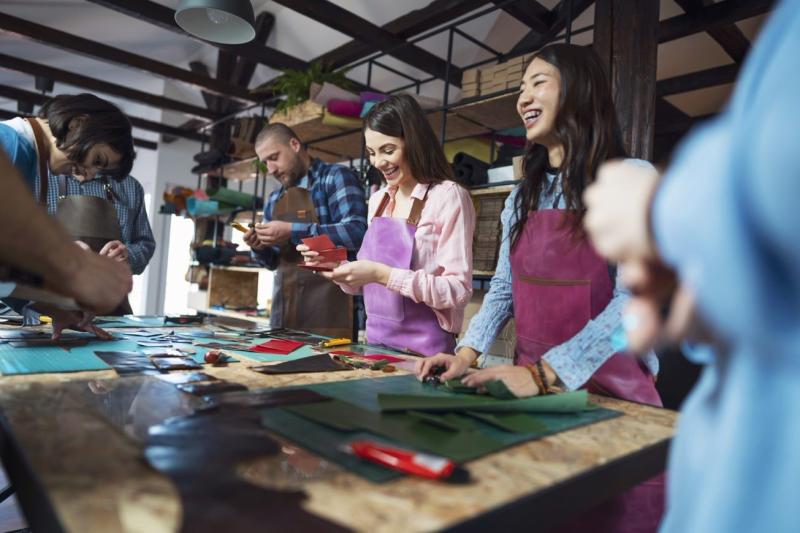
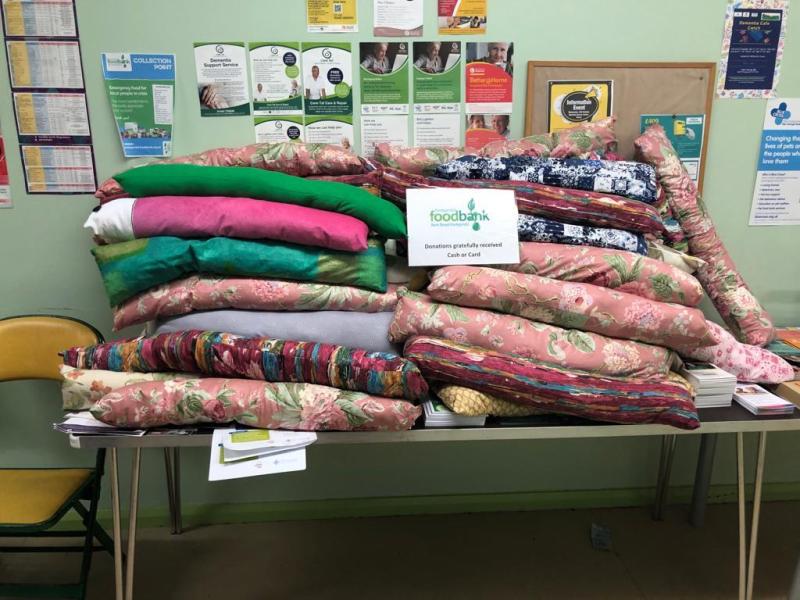
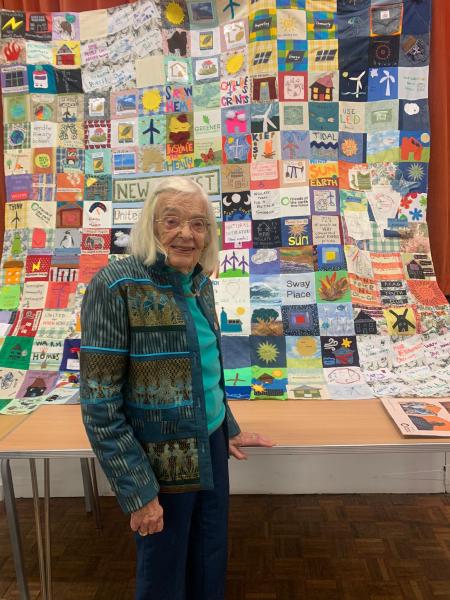
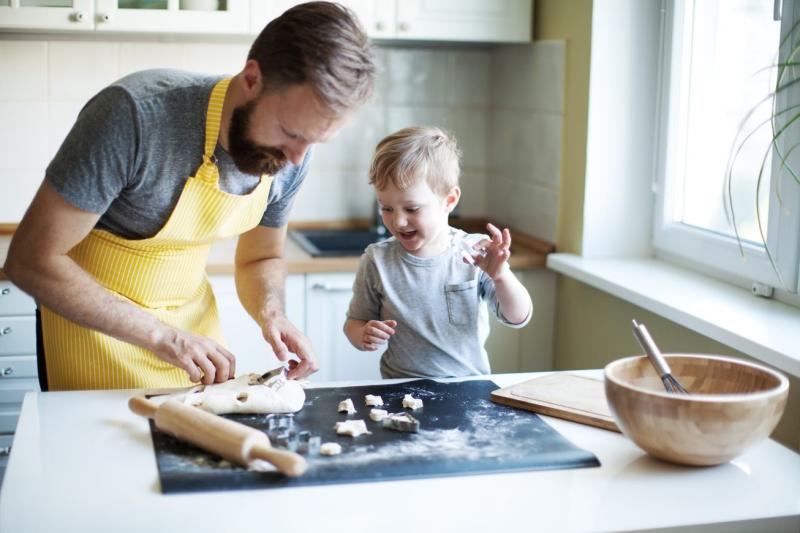
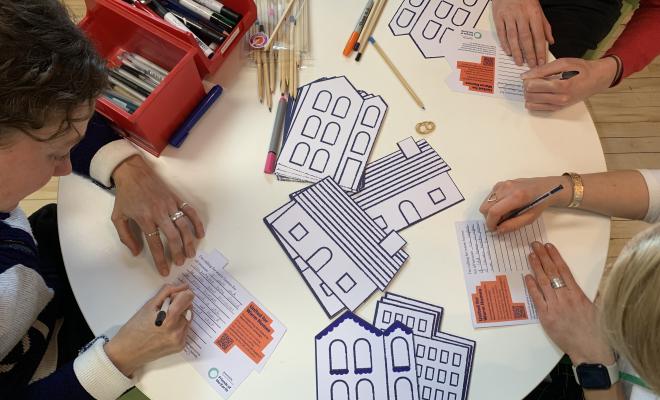
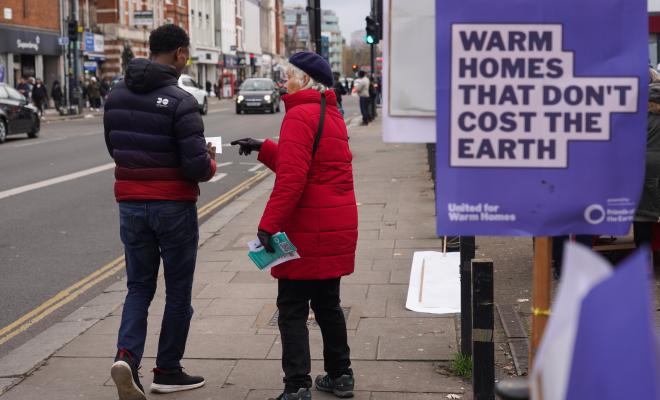
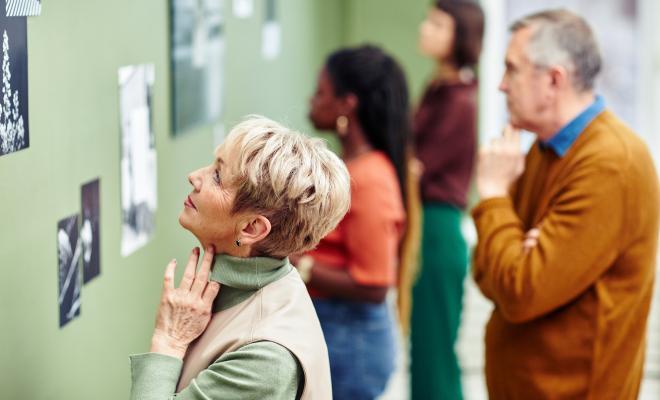
![[null]](/sites/default/files/styles/teaser_wide/public/2022-09/Warm%20Homes_Web%20banner.jpg?itok=wn3BStK5)